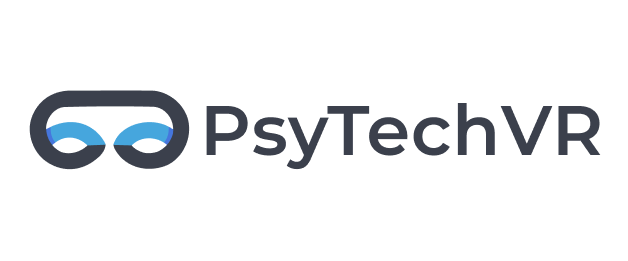Blog - COMPANY LIFE
PsyTechVR vs C2Care:
A Comparative Guide to Virtual Reality Therapy Platforms
A Comparative Guide to Virtual Reality Therapy Platforms
By Daniel Andreev, Chief Product Officer at PsyTech VR
August 14, 2025
What is PsyTechVR and How Does It Work?
PsyTechVR delivers therapeutic interventions in virtual reality using cloud-based infrastructure designed specifically for mental health and wellness applications. It combines immersive VR environments and evidence-based treatment protocols, allowing clinicians to conduct exposure therapy, CBT sessions, and specialized interventions using controlled virtual scenarios.
In this section, we are examining PsyTechVR’s technical architecture, as well as its core features and therapeutic applications that distinguish it on the VR therapy software market.
In this section, we are examining PsyTechVR’s technical architecture, as well as its core features and therapeutic applications that distinguish it on the VR therapy software market.
An Inside Look at the PsyTechVR Platform
Platform Infrastructure
PsyTechVR operates using a cloud-based infrastructure that integrates directly with existing clinical workflows. The platform uses advanced rendering capabilities to create photorealistic therapeutic environments capable of responding dynamically to both therapist interventions and patient actions. PsyTechVR prioritizes clinical precision, making sure that all visual elements in an environment serve their own therapeutic purpose.
Biometric Monitoring Features (Optional)
The system architecture features real-time biometric monitoring capabilities, tracking the physiological responses of patients during sessions. Heart rate variability, galvanic skin response, and eye-tracking data (if required) are all used to create objective measurements of patient’s stress and engagement levels. It is especially important during telehealth sessions. Such biometric integration provides a wealth of insights that traditional talk-based therapy cannot offer, creating much more comprehensive sessions reports to inform treatment plans and assess therapy progress.
Therapist Dashboard & Control Tools
Therapist control panels are intuitive interfaces for session management, allowing for virtual environment adjustments in real-time without any interruption to the therapeutic flow. With PsyTechVR, clinicians modify lighting conditions, remove or introduce stimuli, and guide patients using graduated exposure protocols with precise control over timing and intensity. HIPAA (Health Insurance Portability and Accountability Act) compliance is maintained throughout all data. PsyTechVR does not collect, store or transmit any personal information.
Top Features and Tools of PsyTechVR
The signature feature of PsyTechVR is its extensive usage of four different AIs, but it also has an extensive library of prebuilt different therapeutic scenarios (over 150 with 6 DoF), each designed around specific evidence-based treatment methodologies and clinical protocols. These environments tend to range from realistic simulations of casual everyday situations (medical appointments, social gatherings, job interviews) to highly specialized exposure therapy modules created to treat specific phobias – including agoraphobia, claustrophobia, cynophobia, ergophobia, and more.
Core therapeutic tools of the platform include:
Advanced customization options enable therapists to modify their existing scenarios or even create completely new environments for highly specific patient needs. Such flexibility helps ensure that treatment remains relevant and engaging during the entire therapeutic process, adapting to evolving treatment goals and patient progress. Drag-and-drop interfaces are used in custom environment creation to further improve overall clinical efficiency.
Core therapeutic tools of the platform include:
- Cognitive Behavioral Therapy (CBT) modules guiding patients through various thought-restructuring exercises in highly immersive contexts
- Mindfulness and relaxation environments with guided meditation spaces and stress-reduction scenarios
- Social skills training simulations that allow patients to practice interpersonal interactions in controlled settings
- Trauma processing environments designed for exposure therapy protocols and EMDR (Eye Movement Desensitization and Reprocessing)
- Anxiety disorder treatments with graduated exposure protocols for different phobia-related responses
- Integration capabilities with existing Learning Management Systems (CoreAchieve LMS provides customizable guides, trainings and questionnaires)
Advanced customization options enable therapists to modify their existing scenarios or even create completely new environments for highly specific patient needs. Such flexibility helps ensure that treatment remains relevant and engaging during the entire therapeutic process, adapting to evolving treatment goals and patient progress. Drag-and-drop interfaces are used in custom environment creation to further improve overall clinical efficiency.
Therapeutic Applications and Scenario Library of PsyTechVR
PsyTechVR delivers targeted therapeutic interventions across a wide range of mental health conditions using its extensive library of over 150 evidence-based therapeutic scenarios. Each environment undergoes clinical validation and is easily customizable based on individual patient needs while maintaining therapeutic efficacy with real-time monitoring and therapist oversight.
There are also five primary therapeutic applications that PsyTechVR supports:
There are also five primary therapeutic applications that PsyTechVR supports:
- Anxiety disorders and phobias
- PTSD (Post-Traumatic Stress Disorder) and trauma processing
- Addiction recovery programs
- Cognitive Behavioral Therapy integration
- Mental wellness programs including Safe Place, guided meditation, body relaxation, art therapy, virtual traveling and more
Anxiety Disorders and Phobia Treatment
Anxiety disorders and phobia treatment form the core strength of the platform, with comprehensive exposure therapy protocols being used to treat specific phobias, including, but not exclusive to:
- acrophobia (heights)
- arachnophobia (spiders)
- agoraphobia (public spaces)
- germophobia (bacteria and contamination)
- mysophobia (dirt and uncleanliness)
- aerophobia (airports & flying)
- entomophobia (insects)
- claustrophobia (enclosed spaces)
PTSD and Trauma Processing
PTSD and trauma processing applications are comprised of specialized environments for combat-related PTSD, motor vehicle accident recovery, and childhood trauma processing using CBT or EMDR integration and exposure therapy protocols. Virtual scenarios are easily customizable based on individual trauma histories while maintaining clinical safety using continuous biometric monitoring and therapist control.
Addiction Recovery Programs
Addiction recovery programs utilize cue exposure therapy in virtual environments, recreating high-risk situations such as social gatherings, bars, and triggering contexts where patients would be able to practice refusal skills and craving management capabilities. The platform supports treatments for substance use disorder, gambling addiction recovery, and behavioral addiction interventions while measuring objective stress response.
Cognitive Behavioral Therapy Integration
Cognitive Behavioral Therapy (CBT) integration offers immersive modules that guide patients through exercises of thought restructuring within therapeutic contexts. Virtual environments enable cognitive pattern recognition and behavioral modification techniques, and therapists also monitor physiological responses at the same time, adjusting interventions based on real-time patient feedback and progress indicators.
Mental Wellness practices
Mental Wellness practices include custom AI generated Safe Place, breathing exercise, guided meditation, virtual traveling, art therapy protocols for patients with various forms of anxiety during and after treatments. Virtual relaxation environments and exercises for guided mindfulness help patients develop anxiety and pain coping strategies, while access to biometric data offers objective measurement of how effective intervention measures and therapeutic outcomes are.
What are the Main Features and Clinical Uses of C2Care?
C2Care is a European-developed virtual reality therapy platform, emphasizing evidence-based treatment protocols and clinical research validation. It was founded by healthcare professionals and researchers with the focus on creating medically-approved VR therapeutic solutions with robust scientific backing and regulatory compliance at international healthcare markets.
In here, we aim to explore the platform architecture of C2Care, as well as its therapeutic tools and clinical validation – everything that positions it as a research-driven alternative on the VR therapy market.
In here, we aim to explore the platform architecture of C2Care, as well as its therapeutic tools and clinical validation – everything that positions it as a research-driven alternative on the VR therapy market.
Main Features and Platform Architecture of C2Care
C2Care operates via a medical-grade platform designed with GDPR (general data protection regulation) compliance and European healthcare standards in mind. The system relies on proprietary VR technology optimized for therapeutic applications, with high-fidelity environments being specifically validated using clinical trials. C2Care prioritizes medical device certification and regulatory approval to ensure platform compliance with European and international healthcare regulations.
The platform’s core architecture is seamlessly integrated with hospital and clinic information systems using HL7 FHIR (Health Level 7 Fast Healthcare Interoperability Resources) standards. Real-time session monitoring captures a variety of treatment progression metrics, physiological responses, and patient behavior data using standardized medical protocols. The data integration capabilities in question support evidence-based treatment planning, all while maintaining strict patient privacy protection within medical data regulations.
C2Care’s therapeutic environments cover a range of clinical specialties including psychiatry, rehabilitation medicine, pain management, and neurological recovery. Each virtual scenario is thoroughly verified and clinically validated before being introduced into the platform – ensuring therapeutic accuracy and safety standards. The platform has support for both tethered systems and stand-alone VR headsets, offering flexibility for different clinical settings and patient mobility requirements.
Key platform features include:
The platform’s core architecture is seamlessly integrated with hospital and clinic information systems using HL7 FHIR (Health Level 7 Fast Healthcare Interoperability Resources) standards. Real-time session monitoring captures a variety of treatment progression metrics, physiological responses, and patient behavior data using standardized medical protocols. The data integration capabilities in question support evidence-based treatment planning, all while maintaining strict patient privacy protection within medical data regulations.
C2Care’s therapeutic environments cover a range of clinical specialties including psychiatry, rehabilitation medicine, pain management, and neurological recovery. Each virtual scenario is thoroughly verified and clinically validated before being introduced into the platform – ensuring therapeutic accuracy and safety standards. The platform has support for both tethered systems and stand-alone VR headsets, offering flexibility for different clinical settings and patient mobility requirements.
Key platform features include:
- Medical device certification with CE marking for European healthcare markets
- Support for multiple languages for international clinical deployment
- Clinician dashboard with session analytics and real-time patient monitoring
- Customizable treatment protocols using established clinical guidelines as the baseline
- Integration capabilities with hospital management systems and electronic health records
- Remote therapy options for home-based treatment delivery and telehealth purposes
C2Care's Clinical Outcomes and Treatment Protocols
C2Care’s treatment protocols are created around peer-reviewed research and evidence-based therapeutic methodologies. The platform uses specialized modules for anxiety disorders, phobias, PTSD, chronic pain management, and neurological rehabilitation, each designed according to established clinical guidelines and validated using controlled studies.
Primary therapeutic applications of C2Care are:
The clinical validation approach of the platform emphasizes randomized controlled trials and peer-reviewed publication of treatment outcomes. C2Care maintains partnerships with research institutions and academic medical centers to continuously validate the platform’s therapeutic effectiveness while expanding evidence-based applications. Published studies demonstrate substantial improvement rates across a range of therapeutic domains, with phobia treatment and anxiety disorder management being particularly strong points of interest.
Treatment customization makes it possible for clinicians to adjust exposure intensity, session duration, and therapeutic progression depending on individual patient needs and clinical assessments. The platform offers a range of standardized outcome measurements such as validated psychological assessment scales, which enable clinicians to track treatment efficiency and adjust protocols using objective progress indicators as guidance.
Research partnerships with European universities and medical institutions support clinical validation studies and ongoing platform development. Academic collaboration ensures that C2Care’s therapeutic modules are still aligned with current clinical best practices and emerging evidence-based treatment methods.
Primary therapeutic applications of C2Care are:
- Exposure therapy protocols to address specific phobias – arachnophobia, agoraphobia, acrophobia, etc.
- Anxiety management programs with the usage of progressive muscle relaxation and cognitive restructuring techniques
- Pain distraction therapy for chronic pain patients and medical procedure anxiety
- Stroke rehabilitation with cognitive retraining exercises and motor function recovery
- ADHD (Attention-Deficit/Hyperactivity Disorder) treatment modules focusing on impulse control development and attention training
- Social anxiety interventions via graduated social interaction simulations
The clinical validation approach of the platform emphasizes randomized controlled trials and peer-reviewed publication of treatment outcomes. C2Care maintains partnerships with research institutions and academic medical centers to continuously validate the platform’s therapeutic effectiveness while expanding evidence-based applications. Published studies demonstrate substantial improvement rates across a range of therapeutic domains, with phobia treatment and anxiety disorder management being particularly strong points of interest.
Treatment customization makes it possible for clinicians to adjust exposure intensity, session duration, and therapeutic progression depending on individual patient needs and clinical assessments. The platform offers a range of standardized outcome measurements such as validated psychological assessment scales, which enable clinicians to track treatment efficiency and adjust protocols using objective progress indicators as guidance.
Research partnerships with European universities and medical institutions support clinical validation studies and ongoing platform development. Academic collaboration ensures that C2Care’s therapeutic modules are still aligned with current clinical best practices and emerging evidence-based treatment methods.
PsyTechVR and C2Care:
Feature Comparison Overview
Direct platform comparison helps healthcare organizations with quick evaluation of core capabilities and strategic differences between these platforms before conducting a detailed analysis. The overview table presented below highlights fundamental platform characteristics that impact clinical implementation and organizational fit.
PsyTechVR vs C2Care:
Therapist Control and Flexibility
Therapist control capabilities determine how effectively VR therapy sessions can be adapted by clinicians to individual patient needs, responding to any therapeutic developments in real-time. PsyTechVR and C2Care provide distinct approaches to session management, treatment customization, and remote therapy delivery – all of which impact clinical workflows and treatment outcomes.
Real-Time Session Control and Environment Adjustments
PsyTechVR offers intuitive real-time controls using its therapist dashboard, allowing clinicians to modify virtual environments during active sessions without disrupting a patient’s sense of immersion. Therapists also have access to lighting intensity adjustments, manual control over anxiety-triggering stimuli, and the ability to change scenario complexity at any point in time. Graduated exposure protocols of the platform enable precise escalation or de-escalation of stress-inducing elements based on verbal feedback and patient’s physiological responses.
C2Care emphasizes structured session control via predefined therapeutic protocols with built-in parameter adjustments. Clinicians are capable of modifying exposure intensity levels, session duration, and therapeutic progression within established clinical guidelines. The medical-grade approach of the platform prioritizes consistency and repeatability, granting standardized control options that align with evidence-based treatment protocols instead of relying on free-form environmental manipulation.
Key difference: PsyTechVR provides more flexible real-time adjustments, while C2Care grants protocol-guided control options with medical validation being the reason for every single modification option available.
C2Care emphasizes structured session control via predefined therapeutic protocols with built-in parameter adjustments. Clinicians are capable of modifying exposure intensity levels, session duration, and therapeutic progression within established clinical guidelines. The medical-grade approach of the platform prioritizes consistency and repeatability, granting standardized control options that align with evidence-based treatment protocols instead of relying on free-form environmental manipulation.
Key difference: PsyTechVR provides more flexible real-time adjustments, while C2Care grants protocol-guided control options with medical validation being the reason for every single modification option available.
Treatment Protocol Customization and Patient-Specific Modifications
PsyTechVR’s customization approach revolves around therapist creativity and clinical judgment. It provides AI prompt based environment creation tools for visual and audio stimuli that do not require any coding knowledge to operate efficiently, greatly reducing the entry barrier for therapists. That way, entirely new scenarios are created, existing therapeutic environments are modified, and it is even possible to create patient-specific trigger scenarios based on individual trauma histories or phobic responses. There is no limit on how many custom environments are stored in the same therapist account.
C2Care’s customization framework works with validated therapeutic protocols, which allow clinicians to adjust treatment parameters while maintaining the integrity of evidence-based methodology. Customization options available for this platform include treatment intensity scaling, exposure hierarchy modification, and protocol duration adjustments (depending on patient progress markers). All modifications to existing treatments remain within clinically-validated parameters to preserve the efficiency of the treatment.
Practical impact: PsyTechVR suits therapists that require maximum creative control over treatment environments, while C2Care appeals to clinicians that prefer evidence-based customization boundaries.
C2Care’s customization framework works with validated therapeutic protocols, which allow clinicians to adjust treatment parameters while maintaining the integrity of evidence-based methodology. Customization options available for this platform include treatment intensity scaling, exposure hierarchy modification, and protocol duration adjustments (depending on patient progress markers). All modifications to existing treatments remain within clinically-validated parameters to preserve the efficiency of the treatment.
Practical impact: PsyTechVR suits therapists that require maximum creative control over treatment environments, while C2Care appeals to clinicians that prefer evidence-based customization boundaries.
Remote Therapy Capabilities and Telehealth Integration
PsyTechVR supports comprehensive delivery of remote therapy using cloud-based architecture that allows patients to go through therapeutic VR sessions from home using one of compatible headset models. Therapists maintain full session control in these cases using remote monitoring dashboards with real-time biometric tracking and environmental adjustments. The platform also has convenient integration with telehealth platforms for combined video conferencing and VR therapy sessions.
The MindGap AI, on the other hand, is a tool for improving remote therapy capabilities that enables therapists to create personalized therapeutic environments in real-time, using text prompts to generate custom VR experiences using AI in roughly 30 seconds for visual and audio stimuli. It greatly improves the individualization of the process, ensuring the efficiency of remote sessions.
C2Care’s remote capabilities focus on structured home-based programs with predetermined therapeutic protocols that patients proceed through without the need for clinical supervision. The platform features Camille AI coach, a virtual therapeutic assistant that guides patients through treatment protocols and offers real-time support during sessions.
By the end of each procedure, therapists receive a detailed session report with progress analytics, but have few capabilities when it comes to influencing the therapeutic process itself in real-time. This platform emphasizes patient safety using built-in session termination protocols linked with stress level monitoring capabilities.
Clinical consideration: PsyTechVR enables active remote therapy guidance with self-directed relaxation practices, while C2Care offers AI-assisted independent practice with comprehensive tracking of its outcomes.
The MindGap AI, on the other hand, is a tool for improving remote therapy capabilities that enables therapists to create personalized therapeutic environments in real-time, using text prompts to generate custom VR experiences using AI in roughly 30 seconds for visual and audio stimuli. It greatly improves the individualization of the process, ensuring the efficiency of remote sessions.
C2Care’s remote capabilities focus on structured home-based programs with predetermined therapeutic protocols that patients proceed through without the need for clinical supervision. The platform features Camille AI coach, a virtual therapeutic assistant that guides patients through treatment protocols and offers real-time support during sessions.
By the end of each procedure, therapists receive a detailed session report with progress analytics, but have few capabilities when it comes to influencing the therapeutic process itself in real-time. This platform emphasizes patient safety using built-in session termination protocols linked with stress level monitoring capabilities.
Clinical consideration: PsyTechVR enables active remote therapy guidance with self-directed relaxation practices, while C2Care offers AI-assisted independent practice with comprehensive tracking of its outcomes.
Hardware and Device Compatibility: PsyTechVR vs C2Care
Hardware compatibility directly impacts clinical implementation costs, setup complexity, and patient accessibility for VR therapy platforms. Both PsyTechVR and C2Care support a range of headset options, but their device requirements and technical specifications create different implementation considerations for therapy practices.
PsyTechVR Device Compatibility:
C2Care Device Support:
Setup Complexity: PsyTechVR provides plug-and-play deployment via cloud-based infrastructure, while C2Care requires healthcare IT integration for compliance with medical data systems.
Hardware Investment: PsyTechVR supports a wider range of compatible devices, with several consumer-grade options, while C2Care relies on medical-certified hardware with higher upfront costs but also inherent regulatory compliance benefits.
Scalability: PsyTechVR enables quick multi-location deployment with its cloud infrastructure. C2Care requires individual site configuration for healthcare network integration and security compliance.
Maintenance Requirements: PsyTechVR offers automatic updates with its cloud delivery capabilities. C2Care relies on controlled update deployment processes aligned closely with healthcare IT security protocols and validation requirements.
PsyTechVR Device Compatibility:
- Oculus Quest 2, Meta Quest 3s and Quest 3 – standalone operation capabilities with wireless freedom
- HTC Vive Pro series - high-fidelity tracking for clinical precision
- Pico 3 and 4 Enterprise - business-grade security and device management capabilities
- Minimum PC requirements: Intel i5-8400 or AMD Ryzen 5 2600, 16GB RAM, GTX 1070 or RX 580
- Also works on various current Mac platforms
- Internet connectivity: Stable broadband connection required for cloud-based sessions
- Mobile compatibility: iOS and Android tablets for therapist control interfaces
C2Care Device Support:
- Oculus Quest 2 and Quest Pro - validated for medical device certification
- HTC Vive Focus series - standalone operation with medical-grade tracking
- Pico 4 Enterprise - GDPR-compliant device management for healthcare
- PC-tethered systems - HTC Vive Pro, Valve Index for research applications
- Minimum specifications: Intel i7-8700 or AMD Ryzen 7 2700, 16GB RAM, GTX 1080 or RX Vega 64
- Network requirements: Secure healthcare network compatibility with HL7 FHIR integration
- Tablet support: Medical-grade tablets for clinician monitoring and session control
Setup Complexity: PsyTechVR provides plug-and-play deployment via cloud-based infrastructure, while C2Care requires healthcare IT integration for compliance with medical data systems.
Hardware Investment: PsyTechVR supports a wider range of compatible devices, with several consumer-grade options, while C2Care relies on medical-certified hardware with higher upfront costs but also inherent regulatory compliance benefits.
Scalability: PsyTechVR enables quick multi-location deployment with its cloud infrastructure. C2Care requires individual site configuration for healthcare network integration and security compliance.
Maintenance Requirements: PsyTechVR offers automatic updates with its cloud delivery capabilities. C2Care relies on controlled update deployment processes aligned closely with healthcare IT security protocols and validation requirements.
Cost Comparison: Pricing Models of PsyTechVR and C2Care
Pricing structures reflect each platform’s target market approach, with PsyTechVR granting flexible subscription options for diverse practice sizes, while C2Care focuses more on enterprise-level licensing aligned with European healthcare systems. Cost considerations extend beyond basic licensing fees to also cover implementation support, hardware requirements, training expenses, and ongoing technical assistance.
Understanding how the total cost of ownership is formed in both cases helps healthcare organizations to make informed decisions based on practice size, patient volume, and long-term strategic objectives instead of focusing only on initial licensing costs.
Understanding how the total cost of ownership is formed in both cases helps healthcare organizations to make informed decisions based on practice size, patient volume, and long-term strategic objectives instead of focusing only on initial licensing costs.
Licensing Models and Subscription Structures
PsyTechVR uses subscription-based pricing designed for scalability across different organizational sizes. The platform offers flexible licensing tiers to accommodate individual mental health practices, university programs, and larger healthcare organizations using month-to-month or annual subscription options.
For example, psychotherapists and mental health counselors have access to PsyTechVR’s software for $120/month (with volume discounts). The exact rates for mental health organizations, universities, and colleges are only available on a per-request basis, though, and differ significantly depending on a number of factors. This approach enables practices to implement VR therapy without massive upfront investments while maintaining the predictability of operational expenses.
Subscription flexibility allows organizations to scale usage based on patient demand and therapeutic program growth. Practices are free to adjust licensing levels seasonally or as program expansion occurs, offering extensive budget control and implementation flexibility for different organizational needs.
C2Care follows enterprise licensing models typical of medical device platforms, with pricing structures being based on organizational size, provider count, and integration complexity. Medical device certification and regulatory compliance requirements of the platform necessitate comprehensive licensing agreements with clinical validation, regulatory documentation, and ongoing compliance support.
Enterprise pricing reflects C2Care’s substantial focus on healthcare system-wide implementations with standardized protocols and centralized management. Larger organizations benefit from volume pricing advantages and comprehensive support services, but also require coordinated procurement and implementation across multiple departments or locations.
For example, psychotherapists and mental health counselors have access to PsyTechVR’s software for $120/month (with volume discounts). The exact rates for mental health organizations, universities, and colleges are only available on a per-request basis, though, and differ significantly depending on a number of factors. This approach enables practices to implement VR therapy without massive upfront investments while maintaining the predictability of operational expenses.
Subscription flexibility allows organizations to scale usage based on patient demand and therapeutic program growth. Practices are free to adjust licensing levels seasonally or as program expansion occurs, offering extensive budget control and implementation flexibility for different organizational needs.
C2Care follows enterprise licensing models typical of medical device platforms, with pricing structures being based on organizational size, provider count, and integration complexity. Medical device certification and regulatory compliance requirements of the platform necessitate comprehensive licensing agreements with clinical validation, regulatory documentation, and ongoing compliance support.
Enterprise pricing reflects C2Care’s substantial focus on healthcare system-wide implementations with standardized protocols and centralized management. Larger organizations benefit from volume pricing advantages and comprehensive support services, but also require coordinated procurement and implementation across multiple departments or locations.
Implementation Costs and Hardware Considerations
PsyTechVR’s implementation approach grants cost flexibility via broad hardware compatibility. Organizations choose from consumer-grade VR headsets and professional VR systems based on clinical requirements and budget constraints. Such flexibility is what enables practices to start with lower-cost equipment and upgrade as programs expand.
Training and onboarding costs remain minimal due to intuitive therapist interfaces designed for quick adoption by mental health professionals. The cloud-based architecture of the platform reduces IT infrastructure requirements, limiting implementation expenses to licensing fees and chosen hardware investments.
C2Care necessitates coordinated enterprise deployment with standardized medical-grade VR systems to ensure consistent performance and regulatory compliance. Implementation costs cover specialized hardware procurement, healthcare IT integration, and compliance validation processes that are all required for medical device certification.
Professional services for C2Care deployment typically cover implementation planning, staff training, EHR integration, and ongoing optimization support. These comprehensive services ensure successful deployment but also require substantial initial investment compared to self-implemented options.
Training and onboarding costs remain minimal due to intuitive therapist interfaces designed for quick adoption by mental health professionals. The cloud-based architecture of the platform reduces IT infrastructure requirements, limiting implementation expenses to licensing fees and chosen hardware investments.
C2Care necessitates coordinated enterprise deployment with standardized medical-grade VR systems to ensure consistent performance and regulatory compliance. Implementation costs cover specialized hardware procurement, healthcare IT integration, and compliance validation processes that are all required for medical device certification.
Professional services for C2Care deployment typically cover implementation planning, staff training, EHR integration, and ongoing optimization support. These comprehensive services ensure successful deployment but also require substantial initial investment compared to self-implemented options.
Cost Consideration Factors for PsyTechVR and C2Care
Final Overview: Choosing Between PsyTechVR and C2Care
Platform selection depends on organizational priorities, clinical focus, and implementation requirements instead of one solution being objectively superior to the rest. PsyTechVR excels in mental health practices that seek granular therapeutic control and flexible deployment, while C2Care serves healthcare systems requiring medical-grade validation and regulatory compliance.
PsyTechVR offers the best fit for mental health-focused practices, university counselling centers, and mental health organizations that prioritize direct therapist-patient relationships with real-time session control. Key advantages include flexible hardware compatibility, subscription-based pricing that scales with practice growth, and comprehensive biometric monitoring with 150+ customizable therapeutic scenarios. The platform’s cloud-based architecture allows for rapid implementation without the need for extensive IT infrastructure, making it far more accessible for practices seeking VR therapy innovation with little-to-no deployment complexity.
C2Care delivers great value for large healthcare systems, research institutions, and organizations that require regulatory compliance with standardized clinical protocols. Primary benefits of the platform include CE marking for European healthcare markets, academic research partnerships supporting clinical validation, and HL7 FHIR integration with hospital information systems. Large-scale deployments benefit from standardized hardware approaches and enterprise-level support services ensuring consistent treatment delivery across multiple locations.
Decision factors center on three core considerations:
PsyTechVR offers the best fit for mental health-focused practices, university counselling centers, and mental health organizations that prioritize direct therapist-patient relationships with real-time session control. Key advantages include flexible hardware compatibility, subscription-based pricing that scales with practice growth, and comprehensive biometric monitoring with 150+ customizable therapeutic scenarios. The platform’s cloud-based architecture allows for rapid implementation without the need for extensive IT infrastructure, making it far more accessible for practices seeking VR therapy innovation with little-to-no deployment complexity.
C2Care delivers great value for large healthcare systems, research institutions, and organizations that require regulatory compliance with standardized clinical protocols. Primary benefits of the platform include CE marking for European healthcare markets, academic research partnerships supporting clinical validation, and HL7 FHIR integration with hospital information systems. Large-scale deployments benefit from standardized hardware approaches and enterprise-level support services ensuring consistent treatment delivery across multiple locations.
Decision factors center on three core considerations:
- Clinical objectives (intensive mental health therapy vs standardized medical protocols)
- Implementation complexity (rapid deployment vs comprehensive enterprise integration)
- Regulatory requirements (standard mental health billing vs medical device classification)
Key Takeaways
- PsyTechVR excels for mental health practices seeking real-time therapeutic control and flexible implementation with sophisticated biometric monitoring
- C2Care serves healthcare systems requiring medical device certification, regulatory compliance, and standardized clinical protocols
- Implementation complexity differs substantially between the two, from simple cloud deployment (PsyTechVR) to enterprise-level healthcare system integration (C2Care)
- Hardware approaches reflect target markets, with PsyTechVR having a wider range of supported consumer and professional headsets, while C2Care emphasizes medical-grade standardized equipment
- Pricing models are aligned with general organization size, where PsyTechVR relies on flexible subscriptions while C2Care uses enterprise licensing structures
- Both platforms offer evidence-based VR therapy but differ in therapeutic control philosophy and regulatory validation approaches
| | Get in touch We're ready to lead you into the future of mental health Sending this information you agree to share your personal information according and limited by our confidentiality statement. |
Safe and secure

Welcome!
We're excited to offer you the chance to experience the power of PsyTech VR with a FREE Trial!




 PsyTechVR
PsyTechVR


